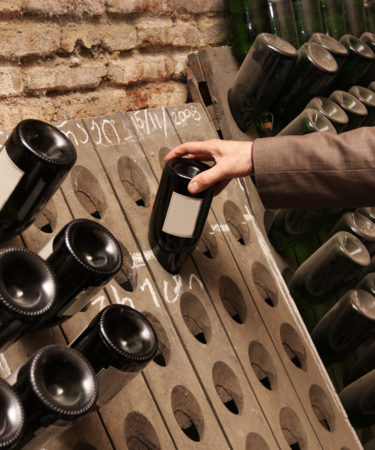For years, wine professionals have been telling us when to drink that expensive bottle that we splurged on or were gifted (drink by this date or hold until that date). But what exactly are they referring to? Does wine eventually die? Is there a peak time to enjoy that baller bottle? It can be a bit dizzying but generally the life of a wine depends on a few factors, including vintage characteristics, place or origin, and how the wine was made. Was the growing season too hot or too cold? Did it rain too much, did it hail, or was it a perfect year? Where is the wine being made? What kind of soil composition are the vines in and which grapes are being used? Are these grapes even intrinsically destined to age as a wine? And lastly, how is the wine being made? Does the winemaker intend to see his or her wine age? Nice and confusing, huh?
Don’t fret. We have the internet. There is plenty of information out there about the bottle you have and whether it was made in an off year or a “banner” year. There are charts and graphs available to tell you when to drink said bottle and how long to wait until it “peaks.” To understand this, let’s look at what’s happening inside the bottle so that when you do pop it, you have an idea of how it got to this point.
Wine is generally made up of four elements: water, alcohol, acidity and what science calls phenolic compounds, which is all the organic material that adds to a wine’s color and aroma profile. One of the wonders of wine is that it is a living thing. And after it’s bottled the party doesn’t stop. Two of these elements, alcohol and acidity, are pretty much constant. They can actually outlive the life of the wine (water is a constant as well but can evaporate). But over time it’s the phenolic compounds such as tannin, natural color pigments and flavor compounds that continue to interact with each other. As oxygen seeps into the bottle through the porous cork it binds with these organic elements, forcing some of them to then bind together. As this happens the phenols gain weight and fall to the bottom of the bottle in what is known as throw off or sediment (one of the main reasons for decanting).
This is the process of aging. The wine is actually fining itself. These phenols are the things that give complexity to a wine, and as they bind and fall, the wine flavor profile changes. A young harsh red wine becomes softer from losing some it’s tannin structure, making it gentler on the palate and allowing new aromas to come center stage. The color changes from inky red to a beautiful brickish color as the pigments dissolve, allowing the eternal acidity to brighten up the wine a bit more. And at some point during this process, depending on those first three factors, something amazing happens. All the elements in the bottle enter into a perfect harmony. This is what is called the “peak”. This is where the wine is at its best. Drinking an age-worthy wine at its peak is what dreams are made of. With white wines it’s a little different; there’s less organic material, so this process happens a bit quicker.
But wine can be just as enjoyable before and after its peak. If a wine is well made it can be wonderful in the years before perfect harmony sets in. And this is why some people buy a half or full case of age-worthy wine to see how a particular wine evolves. After the peak the wine will still be enjoyable but the years of depth and complexity begin to dwindle. And beyond the wine’s peak it doesn’t stop fining itself. The organic material in the bottle continues to bind and fall, and at some point there aren’t enough phenols to balance the wine and the acidity, a sour, tart element needed to keep all of the structure of the wine in check. The liquid begins to taste thin and too high toned until all that’s left is an old and tired musty wine.
Not all wine is age-worthy, and in fact, the majority of wine out there is not. Wines that benefit from years in the bottle tend to be more expensive and are a bit of an investment. For reds, these include the wines of Bordeaux, Burgundy, Barolo and Barbaresco, averaging a little over two decades. For whites Chardonnays from Burgundy, Riesling and Chenin Blanc are the best to age, averaging about fifteen years (up to twenty for Rieslings). Sure that’s a lot of time to wait, but the payback is pretty magical.
